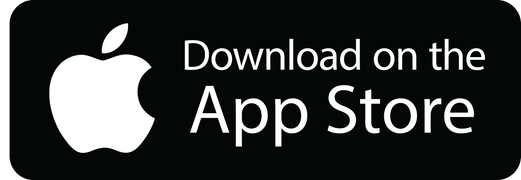The Key Elements Every Audit Findings Record Should Include
 Ahmad Malik
31 Oct, 2025
15 mins read
2
Ahmad Malik
31 Oct, 2025
15 mins read
2

When it comes to audits, whether internal or external, documenting your findings accurately is crucial. A well-prepared audit findings record not only highlights compliance gaps but also provides actionable insights that can prevent costly errors, improve processes, and ensure safety standards are met. But what exactly should be included in these records? And how can organizations make them more effective and professional?
For anyone exploring career growth in health, safety, or compliance, understanding audit documentation is a foundational skill. Completing an IOSH professional training program can give you hands-on exposure to such documentation practices while also enhancing your analytical skills in real-world scenarios.
Why Audit Findings Records Matter
An audit findings record is more than just a checklist. It is a formal account of observations, non-conformities, and recommendations identified during an audit. Proper records:
- Ensure accountability and traceability of issues.
- Provide management with clear data to make informed decisions.
- Support continuous improvement in workplace safety and operational efficiency.
- Serve as evidence for compliance with industry standards, regulations, or certification requirements.
For instance, imagine a manufacturing plant audit where several machinery maintenance records are missing. If this gap is clearly documented, management can immediately address the issue and prevent potential accidents.
Key Elements of an Effective Audit Findings Record
An audit findings record should be structured, comprehensive, and easy to understand. Here’s a detailed breakdown of the essential components.
1. Header Information
This section provides context for the audit record. Include:
- Audit title or type (e.g., safety audit, quality audit, compliance audit)
- Audit date and time
- Name(s) of auditor(s)
- Department, site, or process being audited
- UniQue record reference number
Having consistent header information ensures records are easily retrievable and can be cross-referenced with other documents.
2. Objective of the Audit
Clearly state why the audit is being conducted. For example:
- Assess compliance with safety regulations.
- Verify the effectiveness of internal controls.
- Identify opportunities for process improvement.
A concise objective helps readers understand the purpose of the findings at a glance.
3. Scope of the Audit
Define what the audit covers, including:
- Locations, departments, or processes audited.
- Timeframe reviewed.
- Specific standards, regulations, or internal policies checked.
Documenting the scope prevents misunderstandings and sets clear boundaries for what the audit findings represent.
4. Methodology and Tools Used
Explain how the audit was conducted. Include:
- Inspection methods (visual, sampling, testing)
- Checklists or questionnaires used
- Interviews or observations performed
- Software or tools leveraged
For example, during an OSHA compliance audit, an auditor may use a pre-designed checklist to evaluate hazard control measures. Recording the methodology ensures the findings can be validated and replicated if needed.
5. Detailed Findings
This is the core of the audit record. Include:
- Observation or non-conformity description
- Location or process involved
- Risk or impact assessment (high, medium, low)
- Evidence supporting the finding (photos, documents, interview notes)
- Reference to the relevant standard or regulation.
Use clear and concise language to ensure the findings are understandable by all stakeholders.
6. Root Cause Analysis
Whenever a non-conformity is identified, it’s helpful to briefly analyze why it occurred. Common methods include:
- 5 Whys analysis
- Fishbone (Ishikawa) diagrams
- Process mapping
For instance, if an incident occurs due to improper chemical storage, the root cause might be inadequate training or unclear SOPs. Documenting the root cause allows for more targeted corrective actions.
7. Recommendations and Corrective Actions
Provide actionable advice for resolving issues:
- Immediate corrective action (short-term fix)
- Preventive measures (long-term solutions)
- Responsible person or team
- Expected completion date
Tip: Use bullet points for clarity, e.g.:
- Label all chemical containers as per OSHA guidelines.
- COnduct refresher training for warehouse staff by next quarter.
- Implement monthly inspections for storage areas.
8. Auditor’s Comments
Include observations that may not fit into the findings or recommendations sections but are relevant for management. Examples:
- Notable strengths or best practices.
- Suggestions for process improvements.
- Observations about staff awareness and engagement.
9. Management Response and Follow-Up
A strong audit record encourages two-way communication. Include:
- Management acknowledgment of findings.
- Agreed-upon corrective actions.
- Follow up schedule to verify completion.
A clear follow-up ensures accountability and demonstrates that the audit process drives real change.
Practical Tips for Writing an Effective Audit Findings Record
Use Clear and Precise Language
Avoid jargon or overly technical terms. Assume the record will be read by people with varying expertise.
Structure with Tables and Checklists
Tables allow readers to scan quickly. Example table headers:
| Observation | Risk Level | Evidence | Recommended Action | Responsible Person | Due Date |
Include Visual Evidence
Photos, charts, or diagrams can strengthen your findings and reduce ambiguity.
Be Objective
Focus on facts, not opinions. Avoid language that could be interpreted as judgmental.
Maintain Confidentiality
Sensitive information should be handled carefully, especially when the audit involves personnel performance or financial data.
Integrating Training into Audit Effectiveness
Completing formal programs like IOSH professional training can significantly enhance your audit documentation skills. These programs teach:
- Standardized methods for recording findings.
- Risk assessment techniques.
- How to communicate observations clearly and effectively.
Such training ensures that your audit records are not just compliant but also actionable, supporting continuous improvement in any organization.
Leveraging Certification for Professional Growth
For individuals seeking recognition in health, safety, and compliance, enrolling in an IOSH certificate program Cosmic Institute provides several advantages:
- A structured curriculum covering audit procedures and reporting.
- Practical examples and case studies to apply learning.
- Credibility with employers looking for certified professionals.
- Career progression opportunities in safety management, risk assessment, and compliance roles.
By combining certification with real-world audit experience, you can produce records that are thorough, professional, and impactful.
Frequently Asked Questions (FAQs)
What is the difference between an audit report and an audit findings record?
An audit findings record documents observations, evidence, and recommendations during the audit. The audit report summarizes findings, conclusions, and recommendations for management review.
How detailed should an audit findings record be?
It should be comprehensive enough to support corrective actions, including evidence, risk assessment, and responsible parties, but concise enough to be easily understood.
Can I use digital tools to record audit findings?
Yes, digital tools and audit management software can streamline record-keeping, improve traceability, and support follow-up actions.
How often should audit findings be reviewed?
Typically, follow-up occurs based on the severity of findings — high-risk issues may require immediate review, while low-risk observations may be assessed periodically.
Who is responsible for completing corrective actions?
Management or designated personnel responsible for the audited area should implement actions, while auditors monitor compliance and effectiveness.
Conclusion
An effective audit findings record is more than a formality — it’s a roadmap for improvement. Including clear objectives, scope, methodology, findings, root causes, and actionable recommendations ensures that audits lead to meaningful change. Incorporating evidence, structured tables, and management responses adds credibility and transparency.
For aspiring health and safety professionals, mastering these documentation skills through IOSH professional training is invaluable. It not only enhances your technical proficiency but also positions you for growth in safety, compliance, and audit roles. Coupled with an IOSH certificate program Cosmic Institute, you can confidently create audit records that drive results, improve safety standards, and advance your career.
Your audit findings record isn’t just a document — it’s a tool to make workplaces safer, more efficient, and more accountable.
Written By:
Ahmad Malik



Hotels at your convenience
Now choose your stay according to your preference. From finding a place for your dream destination or a mere weekend getaway to business accommodations or brief stay, we have got you covered. Explore hotels as per your mood.





